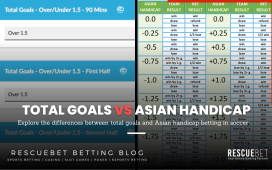Betting has been around for centuries in different forms and formats. In fact, one of the earliest dice with 6 sides was found in Mesopotamia. The dice were in use for games in the region more than 5000 years ago. China popularised its own versions of dominoes, lottery games, card games, and animal fighting for the past 2000 years. And horseracing is a very popular betting sport in the United Kingdom, historically and presently. Gambling has also been popular in other Asian regions such as India for thousands of years. Over time, several professional bettors and statisticians have tried to break down various betting strategies. Betting strategies started to gain popularity around the 14th century. More bettors around the globe propounding and adopting newer strategies. Strategies have given punters more options and courses of action while betting. However, punters can also feel overwhelmed trying to keep track of every strategy. To help punters learn various sports betting strategies in detail, we take a deeper look at the reverse Labouchere sports betting strategy.
The Reverse Labouchere Betting Strategy
The reverse Labouchere betting strategy is essentially a positive progressive strategy. Under this strategy, a punter is inclined to increase a stake after a win. And also essentially decrease a stake after a loss. The system was developed by Henry Labouchere along with the original Labouchere betting strategy. The reverse Labouchere betting strategy is the exact opposite of the Labouchere betting strategy. Under the reverse Labouchere betting strategy, a punter will increase their stake after a win. And the punter will add the amount won to the next number in the sequence instead of deleting the number altogether. In this version of the strategy, a player is listing numbers in a sequence to the maximum extent they can lose. Whereas, the Labouchere betting strategy is a negative progressive strategy. Under the Labouchere betting strategy, an individual will increase their stake after a loss. And a punter will add the numbers from a lost bet back to the sequence. An individual will decrease their stake after a win. And consequently, delete those numbers in the sequence of numbers. In this strategy, a player will list a sequence of numbers they want to win.
Example
Let’s take a look at an example of the reverse Labouchere system. First, a punter must select a sequence of numbers based on the punter’s bankroll and set a limit for each line. In this example, we can assume the limit is $1000. And for simplicity’s sake, the sequence of numbers is $100, $100, $100, $100, $100. If a punter suffers three losses, then his line is completed. And then, the puter has the option of repeating the same line or starting a new sequence. On the plus side, with 9 consecutive wins, a punter will reach the bet limit of $1000. A betting limit of $1000 is a profit of more than $5000.
Features Of Reverse Labouchere Betting System
Some of the features of the reverse Labouchere system include:
1. Long lines – Longer lines have advantages and disadvantages. With a long line, a player stands to lose more as compared to a short line.
2. Counter losing streaks – The reverse Labouchere system is an effective counter to losing streaks. Under this system, with just one or a few win streaks, a punter can expect huge gains. In the Labouchere system, a single losing streak for the punter or a winning streak for the house can wipe an entire bankroll out. Moreover, a punter can only lose a limited amount for each round. The amount lost depends on the chosen sequence.
3. Win percentage – The reverse Labouchere system is risky because it requires a player to lose just over 33% of the time to realize any losses. Looking at it the other way, it’s hard to win over 66% of the time. However, under the Labouchere system, a punter needs to win just over 33% to be profitable. However, each system has its own merits and is advisable to use under differing circumstances.
4. Setting limits – Punters should seek to set limits right from the start. Limits with respect to how much they intend to win or how much of a loss are they willing to take. If a punter is on a serious win streak, the numbers can add up really quickly with a new digit being added after every win. If no limits are set, some games have the potential to go on infinitely. Or at least until a punter runs out of funds.
























